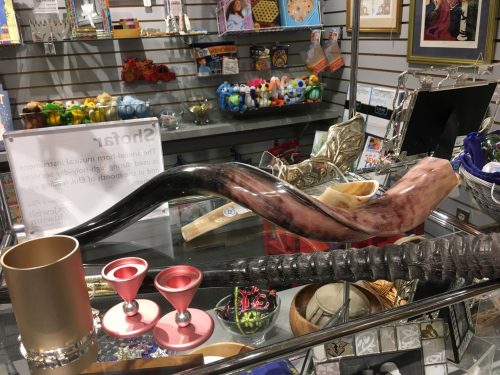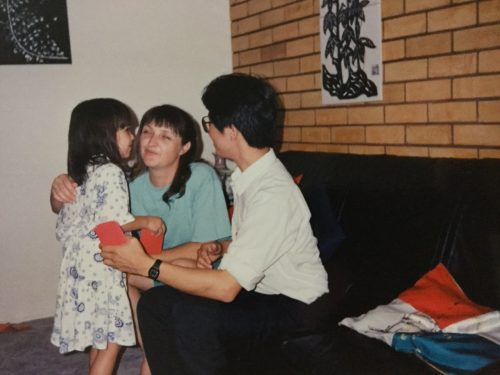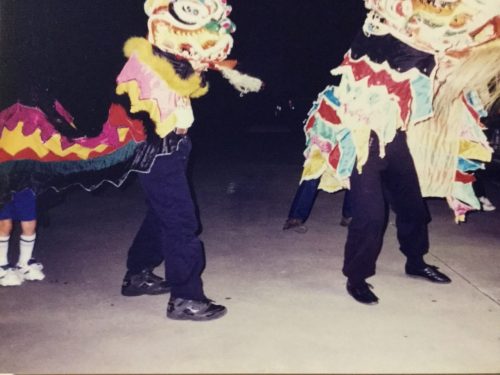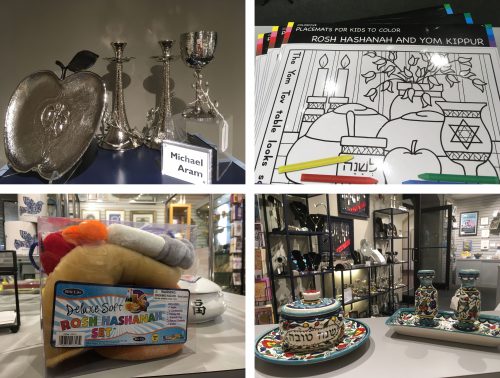The Sweetness of a New Year

A blog post by JMM Office Manager and Shop Assistant Jessica Konigsberg. For more posts from Jessica, click HERE.
As the fall Jewish holidays approach, Esther’s Place is gradually transforming its displays to feature beautiful Kiddush cup-candleholder sets, Rosh Hashanah educational toys, shofars, honey pots, and decorative challah covers. As I plan these displays, I’m also exploring and learning about the holidays for the first time.
The first of the upcoming holidays is Rosh Hashanah, a two-day holiday marking the Jewish New Year and starting on the first day of the Hebrew month Tishrei (in 2018, it begins at sundown on September 9). Rosh Hashanah seems like a good place to begin my education because the concept of a New Year is both joyous and relatable; while the specifics of Rosh Hashanah may be unfamiliar to me, the basic process of reflecting on a year lived and looking ahead to the coming year is personally and universally powerful.
Unsurprisingly, as JMM shop assistant, I’m particularly intrigued by the food and the rituals. I learn that at Rosh Hashanah, the challah (bread) is baked in a round shape to symbolize the continuous cycle of life and dipped in honey to express hope for a sweet New Year. The ritual blowing of the shofar (the hollowed horn of a kosher animal) during prayers also speaks to themes of continuity and renewal. Rosh Hashanah is an opportunity for atonement and reflection.

Reflecting on this, I recall my own childhood spent celebrating Chinese New Year (also known as Lunar New Year) with my immediate family, my childhood hometown’s local Chinese Association, and frequently, my aunts and grandma from Malaysia—who often visited at this time of year.
Chinese New Year for my family always included a “steamboat” meal. Steamboat is similar to fondue, where a hot soup is heated in the central steamboat vessel while those around the table dip and cook various chosen morsels of meat, vegetables, and seafood. Though I never knew the reason for our steamboat tradition at the time, a quick Google search taught me that the steamboat’s round shape symbolizes “reunion” and marks the togetherness of the holiday—a nice parallel to Rosh Hashanah’s round challah and similar emphasis on the family meal.
Another Chinese New Year’s tradition for me was the exchange of “red packets”—money-stuffed envelopes traditionally gifted to the children of the family; yes, it’s a great time of year to be young. My brothers and I would approach our elders and then say a customary Mandarin phrase that basically means: “Happy New Year. Give me the red packet.” Chinese New Year would come to mean a time of extra pocket money and big plans.

My family would also join local Chinese New Year celebrations organized by the Chinese Association. And frequently, my brother Andrew and I would participate in the festival’s lion dance (pictured below). The festival typically concluded with a deafening firecracker display—a spectacle that filled me with both delight and dread as a young child.

After reflecting on my Chinese New Year memories, I realized the best way to learn is through experience. So this year, I’ll enrich my Jewish education by joining my in-laws’ Rosh Hashanah service at Temple B’nai Shalom in Virginia. I hope this will expand my understanding of the High Holidays as well as deepen my growing personal connection to Judaism.

Whatever your own connection to “new year,” I hope that Esther’s Place will evoke for you those special New Year’s feelings of reflection, hope, and sweetness. And if it’s time to update your ritual items, I hope you’ll stop by Esther’s Place and find out what we have to offer.

2 replies on “The Sweetness of a New Year”
👍 Its all about family
Just loved reading this memory and also adaptation of other ways the ‘new year’ can be brought to some significance for everyone; of reflection, restoration and celebration of life. Thank you Jessica